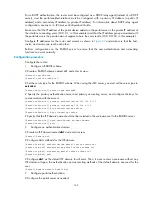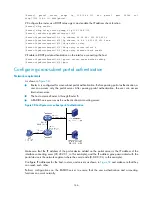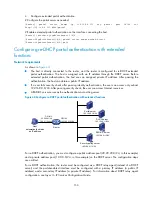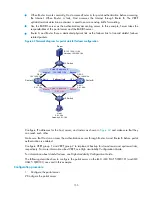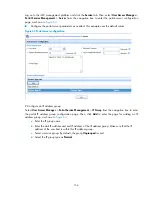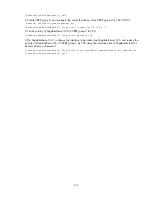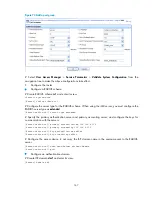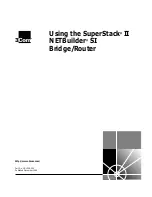
152
[Router] acl number 3000
[Router-acl-adv-3000] rule permit ip destination 192.168.0.0 0.0.0.255
[Router-acl-adv-3000] rule deny ip
[Router-acl-adv-3000] quit
[Router] acl number 3001
[Router-acl-adv-3001] rule permit ip
[Router-acl-adv-3001] quit
4.
Configure extended portal authentication.
# Configure the portal server as needed:
[Router] portal server newpt ip 192.168.0.111 key portal port 50100
url http://192.168.0.111:8080/portal
# Configure the router as a DHCP relay agent, and enable the IP address check function.
[Router] dhcp enable
[Router] dhcp relay server-group 0 ip 192.168.0.112
[Router] interface gigabitethernet 1/0/2
[Router–Gigabitethernet1/0/2] ip address 20.20.20.1 255.255.255.0
[Router–Gigabitethernet1/0/2] ip address 10.0.0.1 255.255.255.0 sub
[Router-Gigabitethernet1/0/2] dhcp select relay
[Router-Gigabitethernet1/0/2] dhcp relay server-select 0
[Router-Gigabitethernet1/0/2] dhcp relay address-check enable
# Enable portal authentication on the interface connecting the host.
[Router–Gigabitethernet1/0/2] portal server newpt method redhcp
[Router–Gigabitethernet1/0/2] quit
Configuring cross-subnet portal authentication with extended
functions
Network requirements
As shown in
:
•
Router A is configured for cross-subnet extended portal authentication. If a user fails security check
after passing identity authentication, the user can access only subnet 192.168.0.0/24. After
passing the security check, the user can access Internet resources.
•
The host accesses Router A through Router B.
•
A RADIUS server serves as the authentication/accounting server.








